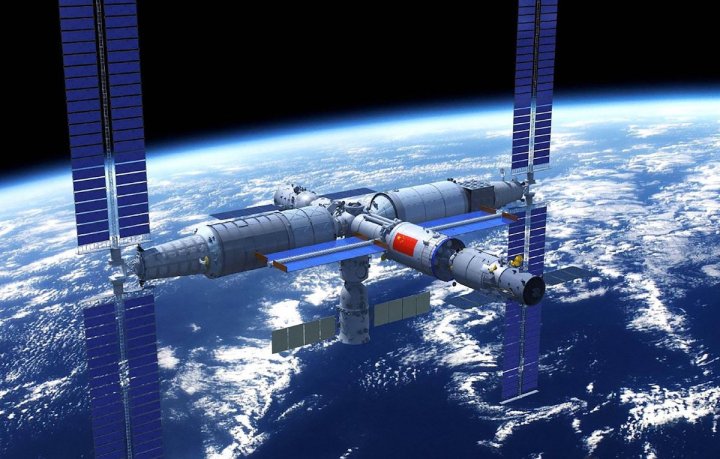
China has confirmed that its first cargo mission has successfully docked with its new space station.
Transporting supplies and propellant, the uncrewed Tianzhou-2 spacecraft reached the main Tianhe module around 230 miles above Earth on Sunday, May 30, according to Chinese media reports.
A Long March-7 Y3 rocket carrying Tianzhou-2 blasted off from the Wenchang Spacecraft Launch Site in Hainan Province some 1,500 miles southwest of Beijing on Saturday, May 29.
The successful docking paves the way for the first Chinese astronauts to visit the station as part of the Shenzhou-12 mission. The three crew members are expected to launch in the coming weeks, according to the China National Space Administration.
China’s space ambitions have been growing in recent years, with challenging missions to the moon and Mars gaining global attention.
China has no involvement in the International Space Station, a situation that prompted it to deploy two prototype space stations — Tiangong 1 and Tiangong 2 — in the last decade so that it could have its own orbiting outpost in space. Both have now been decommissioned, but lessons learned from the projects led to the plan for its newest habitable satellite, the Tiangong Space Station.
Although the station is now able to host astronauts, around 10 more rocket launches are required for China to fully build out the new facility, which it hopes to complete in 2022. Two of the missions will use the Long March-5B rocket — China’s largest and most powerful launch vehicle — to send two additional core modules to the station.
The rocket is so large that some of it failed to burn up when it re-entered Earth’s atmosphere following April’s mission that saw it deploy the first part of the space station.
China received widespread criticism for failing to include technology in the rocket that would’ve allowed for a controlled, directed re-entry. In the event, part of the spent Long March-5B rocket landed in the Indian Ocean near to the Maldives, with no harm caused.
China’s new space-based facility is expected to remain operational for at least 10 years, meaning it’s likely to outlast the 20-year-old International Space Station, which could be decommissioned toward the end of this decade.

